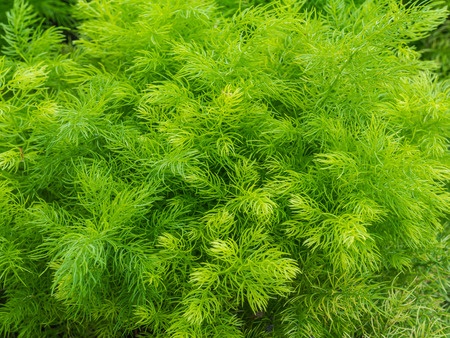Shatavari - Asparagus racemosus

Common Names: Shatavari, Wild Asparagus, Indian Asparagus, Asparagus racemosus, Shatamull, Satavar, Shatamuli, Shatamuli Root, Shatmul, Satavari, Shituli, Vrishya, global: Shatavari, latin: Asparagus racemosus
Latin Name: Asparagus racemosus
Origin: Africa, Asia
Short Introduction
The Asparagus genus includes approximately 200–300 distinct species. It is very common as a decorative indoor plant. The shatavari shrub thrives in direct sunlight or partial shade. The soil and surrounding environment should be kept as moist as possible and at an optimal temperature to prevent the yellowing and dying off of leaves. Shatavari tolerates temperatures as low as 5°C. It should be repotted when the tuber begins to press above the substrate's surface.
Detailed Description
A traditional Indian herb valued for supporting both women's and men's health.
Botanical Information
Shatavari, or Asparagus racemosus, is a perennial shrub that typically reaches a height of 1–2 meters, though records exist of specimens growing up to 3 meters tall. The plant grows upright or has climbing shoots and may have rhizomes or fusiform tubers. Its flowers are white or pink, sweetly fragrant, and can be either dioecious or monoecious, with some being bisexual or unisexual. They are arranged in sparse racemes or umbels. The fruit is a fleshy, almost always red pod or more commonly a berry. The stem of shatavari bears thorns about one centimeter in length, which are either straight or slightly curved. Each stem supports 2–6 leaves, which are usually very small, scaly, sessile with developed sheaths, arranged alternately and simple.
Origin and Distribution
Shatavari is native to Asia, while other species from the genus have developed independently in Europe and Africa. Most species are widespread across Europe, Asia, Africa, and even North America. Shatavari is commonly found in South Asia, especially in Nepal, Sri Lanka, India, and the Himalayas. It prefers gravelly, sandy, or rocky soils at moderate altitudes between 1300 and 1500 meters above sea level.
Usage / Dosage
In tropical and subtropical Indian traditional medicine systems like Ayurveda, Unani, and Siddha, Asparagus racemosus (shatavari) is one of the most important herbs for preventing and treating gastric ulcers, dyspepsia, and supporting gallbladder function. Some Ayurvedic practitioners also use this herb for nervous system disorders. In compound mixtures, shatavari is included to tone the uterus, support lactation, reduce gastric acidity, and as a prominent general health booster.
In Hindi, shatavari literally means "she who possesses a hundred husbands." In traditional healing culture, it is used for rejuvenating and supporting female reproductive organs, as it improves the condition and function of mucous membranes throughout the body, including the uterus. Shatavari helps stabilize the menstrual cycle, regulates PMS and pain, increases breast milk production, soothes postpartum depression, and aids women during breastfeeding. The root is also used for women in midlife or after menopause, as it contains natural phytosterols that ease transitional states. Shatavari is also used by men to support fertility and improve sperm quality and count. For treating urogenital infections, alcoholic extracts of shatavari are recommended as a natural antibiotic, inhibiting the growth of bacteria such as Escherichia coli, Salmonella, and various Staphylococcus species responsible for these infections.
Externally, shatavari root extract is used for stiff neck, sore joints, and skeletal muscle cramps (voluntary muscles). Internally, the extract promotes digestion, improves sleep disorders and sleep physiology, enhances energy levels, supports cardiovascular health, and relieves symptoms of urethral inflammation.
Generally, Asparagus racemosus is used in Southern Asia as a rejuvenating agent, as an immunomodulator through its antioxidant properties, as protection for mucous membranes against irritating substances, and to regulate pH in the vaginal and cervical environments. It has positive effects on digestion, diarrhea, irritable bowel syndrome, ulcerative conditions, and heartburn.
Compounds in shatavari may have the potential to soothe dry, irritating coughs, exhibiting an antitussive effect, and also work as antioxidants. Some studies suggest shatavari extract has mild anti-tumor activity against certain types of cells. Its phytoestrogenic ingredients exert hormonal effects on the body’s overall balance, digestive tract, urinary system, physiological processes, reproductive organs, regular menstruation, normalizing menopausal symptoms, cramps, and fluid retention during menstruation. A significant advantage of shatavari is its suitability during pregnancy and breastfeeding, as it offers various benefits for mothers during these times. Alongside a suitable, non-irritating diet and healthy lifestyle, shatavari is an excellent choice for alleviating mild to moderately severe migraine symptoms.
Active Compounds
Shatavari root contains asparagine A, alkaloids, polycyclic compounds, and their various analogs. Recently discovered steroidal saponins include shatavaroside A and B, as well as others such as filiasparoside C, shatavarins 6–8, asparoside B, shatavarin 4 and 5, immunoside, and schidigerasaponin D5. The types and amounts of saponins vary according to origin and environmental factors. Other constituents include proteins, starches, tannins, mucilage, vanillin, diosgenin, isoflavones, kaempferol, and minerals like sodium, copper, manganese, nickel, zinc, and calcium.
Traditional Dosage
When powdered root is available, the recommended dosage is 0.5–1 gram of root simmered in water for at least 15 minutes, strained and served, ideally twice daily. Alternatively, 2 teaspoons of powdered root mixed with milk in a cup and taken in the evening is another common method. The ground root can also be used raw, added to foods, desserts, or as a spice.
Sometimes a decoction of the whole root is prepared with milk (or water as a substitute). Lactic acid in milk helps activate shatavari’s bioactive compounds. If using capsules (300 mg per capsule), the usual dose is 2 capsules twice daily, about 20 minutes before meals, with plenty of water. For pregnant women, 1–2 capsules in the morning with food is recommended.



